Solved: Garmin Watch Stops Recording (Estimating) VO2 Max
When I bought my Garmin Epix Pro (Gen 2) in early November 2024, I was thrilled by its comprehensive features, including its VO2 Max estimates. It dutifully provided these after every running workout, giving me a metric I could use to gauge fitness progress.
However, something peculiar happened after a self-administered 5K time trial four weeks later, a run I did to honor my mom. The following day, my watch stopped estimating VO2 Max entirely. It also didn’t record an estimate the day after that.
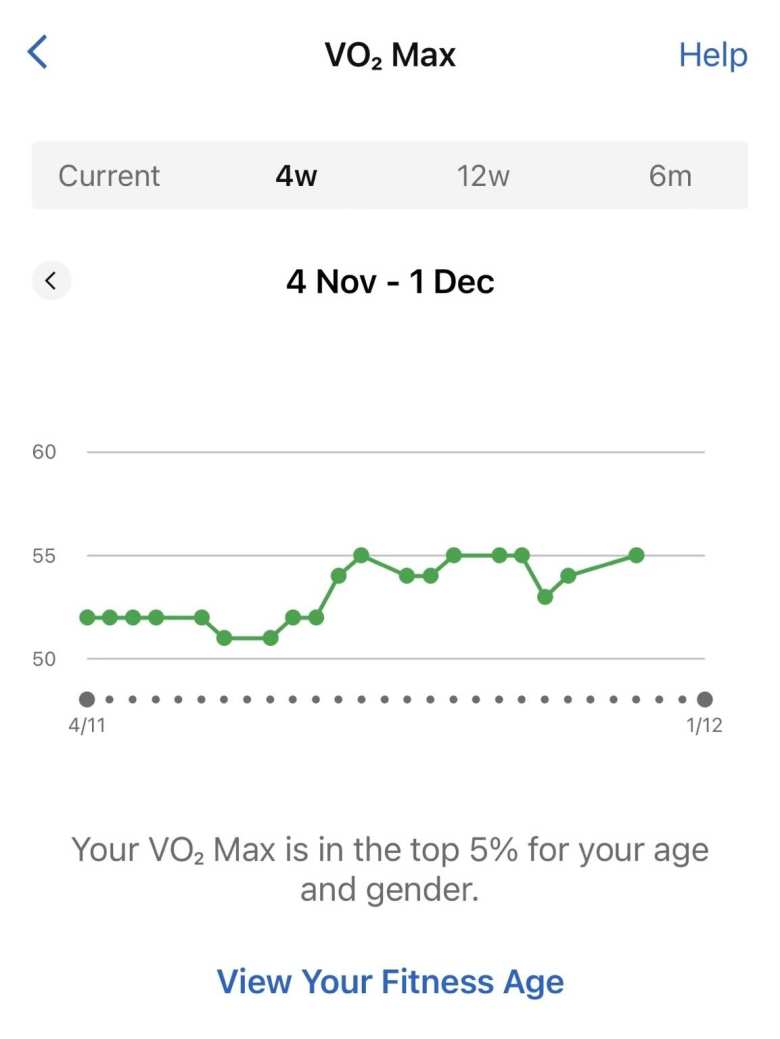
Perplexed, I checked all the usual suspects: heart rate, GPS accuracy, and whether the activity was set to running. Everything seemed fine.
Finally, I stumbled upon the culprit: my heart rate zones.
The Cause: Erroneous Heart Rate Zones
In the middle of a run three days after my 5K time trial, I noticed my heart rate was in the mid-130s—a Zone 2 effort for me—but the Garmin watch was saying I was only in Zone 1. Aha! That was the first clue.
After stopping the run, I checked Garmin Connect and found that the general heart rate zone settings were correct (as found in Garmin Connect app > …More > Garmin Devices > [my Garmin watch] > User Profile > Heart Rate & Power Zones > Heart Rate):
- Maximum HR: 179 bpm
- Lactate Threshold: 158 bpm
- Resting HR: 42 bpm
- Zones Based on Lactate Threshold: Enabled
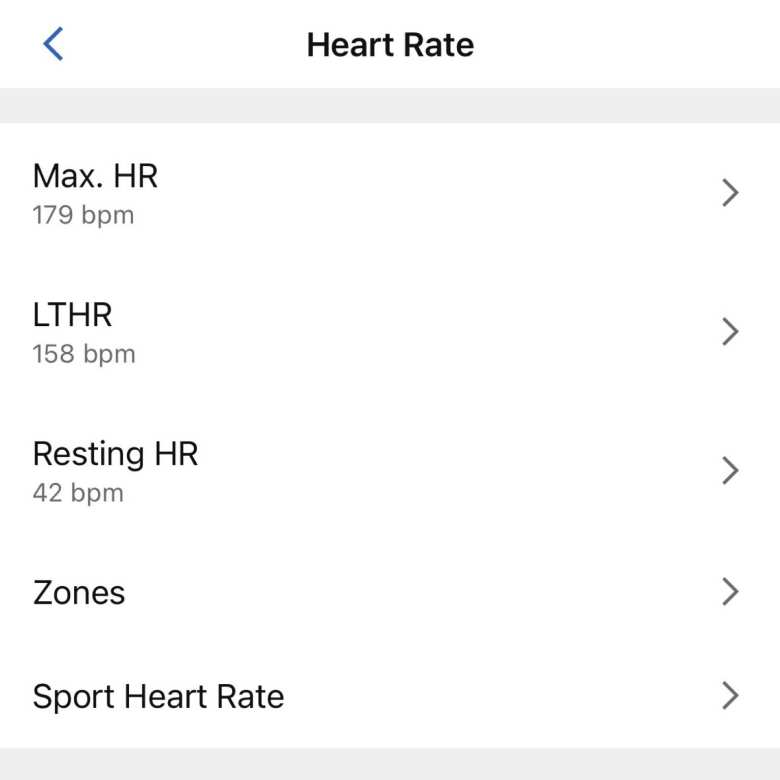
So why was the Garmin misinterpreting my heart rate? I then discovered that Garmin Connect was maintaining a separate set of heart rate zones specifically for running. I found that in Garmin Connect app > …More > Garmin Devices > [my Garmin watch] > User Profile > Heart Rate & Power Zones > Sport Heart Rate > Running:

To my surprise, these had been automatically—and inexplicably—updated after the 5K time trial:
- Lactate Threshold: Changed to 174 bpm (incorrect)
- Maximum HR: Changed to 205 bpm (wildly incorrect)
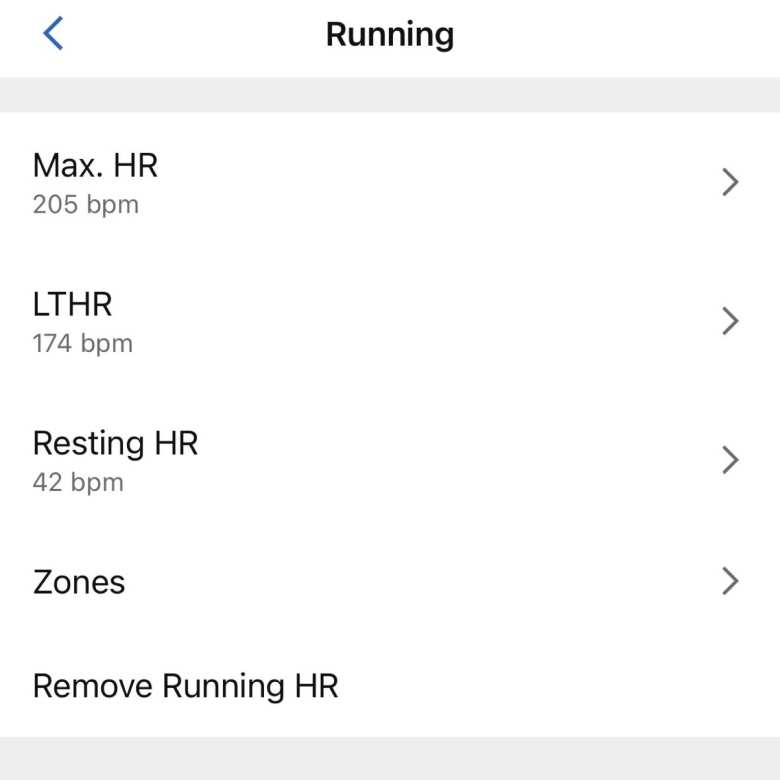
This happened despite the fact that the Garmin correctly recorded my average heart rate of 159 bpm (very close to my true lactate threshold) and a highest-attained heart rate of 166 bpm during the time trial.
Whatever the reason for the erroneous updates, running at 135 bpm—well within my true Zone 2—was then being categorized as Zone 1. A Garmin watch will only provide a VO2 Max estimate if you had been running for at least 10 minutes in Zone 2 or higher.
The Fix: Resetting Heart Rate Zones
To resolve the issue, I deleted the running-specific heart rate zones, forcing the watch to use the general heart rate zones whenever I ran. (Alternatively, you could simply correct the heart rate zones for Running, instead of deleting them.)
I also disabled the automatic detection of Maximum Heart Rate and Lactate Threshold, as these values change minimally over time and can be manually updated if needed. I disabled automatic detection so as to not experience a sudden, unexpected, and incorrect change in heart rate settings again. (How to do that: Garmin Connect app > …More > Garmin Devices > [my Garmin watch] > User Profile > Heart Rate & Power Zones > Auto Detection > turn off Max. Heart Rate and Threshold auto detection.)
After I had deleted the erroneous Running heart rate zones, my Garmin correctly recognized that 137 bpm was Zone 2 for me, as indicated by the Zone 2 (blue) bar at the top of the watch face during my runs.
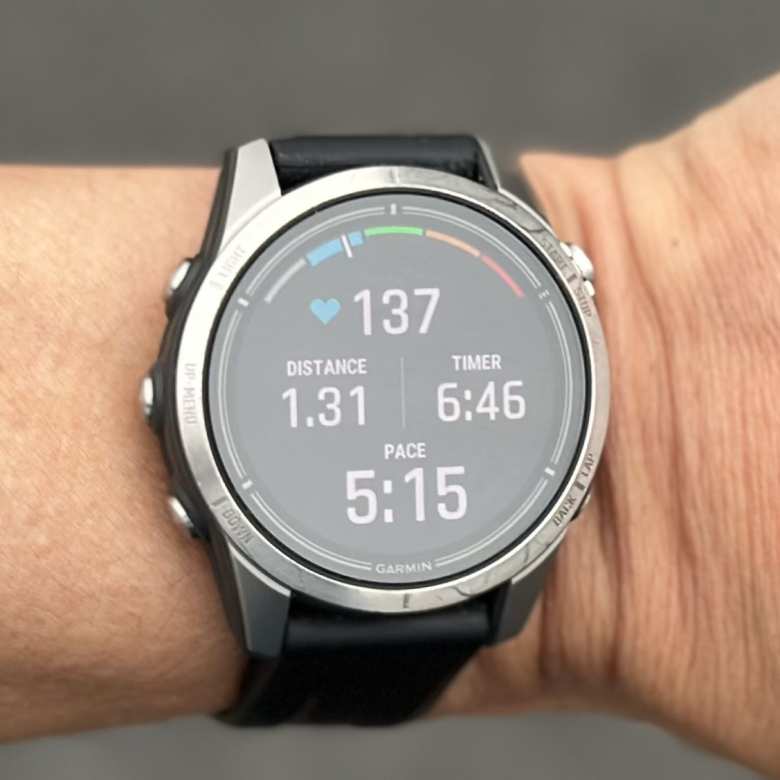
Why Heart Rate Zones Matter for VO2 Max
Garmin watches estimate VO2 Max for running only when the following conditions are met:
- Heart rate is detected: Garmin watches will read your heart rate by default; make sure that you hadn’t turned HR measurement off in Settings for whatever reason.
- Sustained effort in Zone 2 or higher: At least 10 minutes in Zone 2 or above is required.
- Activity type is Running (or Cycling with a power meter). Some users on Reddit have reported that some Garmin watches can also estimate VO2 Max during fast walking, but I wouldn’t trust those estimates nearly as much as those determined when running or cycling. (Third party apps are available in Connect IQ to estimate VO2 Max for swimming, rowing, and the eliptical, but I have no experience with them.)
Incorrect heart rate zones, like those erroneously set by my watch, can prevent Condition #2 above from being met, halting VO2 Max estimates.
Credibility of Garmin’s VO2 Max Estimates
Garmin’s VO2 Max estimates are regarded as reasonably accurate. A study published in January 2022 in the International Journal of Sports Medicine found that Garmin’s estimates are within 4.1% of laboratory-tested values for most users. That means if your true VO2 Max is 50 mL/min/kg, the Garmin would probably give you a reading that’s only 2 mL/min/kg different.
In my own experience, the numbers align with lab results. In 2010, my VO2 Max was measured at 57.6 at Colorado State University’s Human Performance Laboratory. During most of 2024, my previous Garmin 645 Music usually estimated my VO2 Max at 54-55—reasonable given my performance was slightly below 2010 levels.
By the end of December 2024, after regaining peak fitness, my Garmin Epix Pro showed a VO2 Max of 58, consistent with my improved speed and endurance.
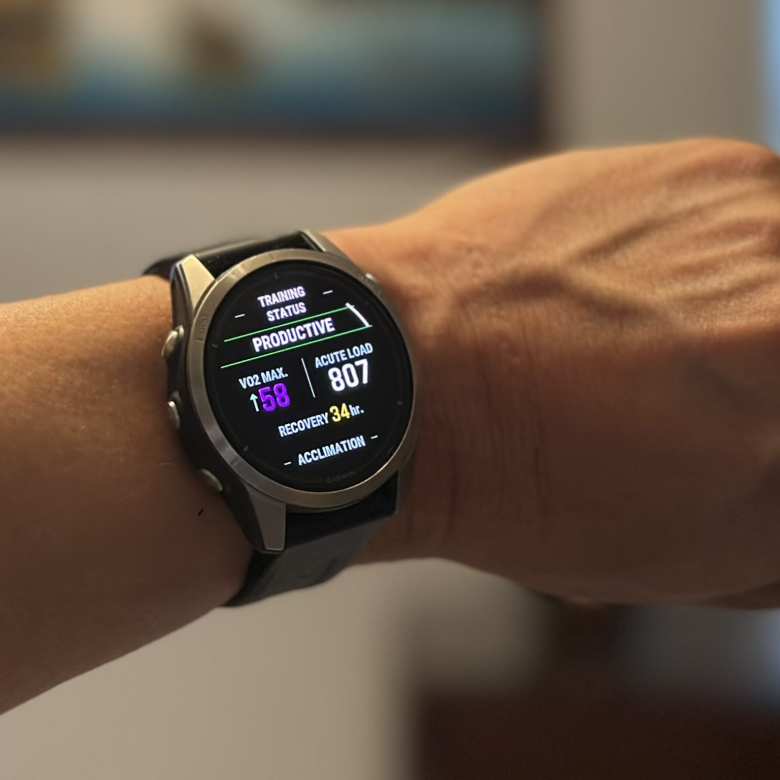
Tips for Accurate VO2 Max Estimates
Ensure Accurate Heart Rate Measurements
Wrist-worn heart rate sensors—like the one on your Garmin—can suffer from cadence lock, a phenomenon where the sensor mistakes wrist movement for heart rate, particularly at running cadences over 160 steps per minute. This would likely penalize (underestimate) your VO2 Max if your running cadence is higher than your heart rate, as it almost always is in my case.
You can mitigate it by doing one of the following while running:
- Wear the watch on top of your arm two finger widths away from your wrist bone. This is farther up the arm, towards the elbow, than most people usually wear watches. There is more flesh in this area than on your wrist, and you avoid the wrist bone lifting the watch and causing a gap.
- Or wear the watch on the underside (palm side) of your wrist.
- Or use an external heart rate monitor. E.g., one worn on your upper arm or chest.
If you do (1) or (2), the watch should be tight enough such that if you try to move your watch, the skin underneath moves with it. But it should not be so tight that it cuts off circulation. (See this post for photos of the positions.)
Option (3)—an external heart rate monitor—is best If you have tattoos or hairy skin where you wear the watch. It also may be more reliable if you are running in extremely cold temperatures (say, around 32F/0C and below).
Regarding external devices, an armband HR monitor can be more comfortable than chest ones, which can feel restrictive—especially if they are worn too tightly around your torso. Armband HR monitors are also rechargeable, whereas the chest HR monitors typically use a coin-sized lithium battery that needs to be replaced every year.
On the other hand, a chest electrode HR monitor is better than the watch’s built-in sensor or armband HR monitors for sprint workouts, as it is more responsive to rapid changes in heart rate. It is also more reliable in cold weather, as optical HR monitors can struggle with vasoconstriction.
If you use a chest monitor, dunk the entire front strap (and sensor unit) in water before putting it on. That will ensure consistent, reliable readings from the very start. I’ve found that to be more effective than using spit or electrode gel on the electrodes only.
Run at Steady-State
VO2 Max estimates are most accurate during steady-state runs rather than intervals or sprints. But to repeat: the runs need to include at least 10 continuous minutes in Zone 2 or higher. Try not to run on a course where you have to frequently stop for, say, red traffic lights.
Run Outside
While Garmins can give a VO2 Max estimate for treadmill runs, the watch needs to be calibrated to the treadmill correctly. And even then, running on a treadmill isn’t exactly the same as running outside. So I would say running outside will provide a more reliable VO2 Max estimate.
I realize that for the laboratory tests, treadmills are used. But the lab tests measure VO2 more directly, by way of mask, whereas Garmin devices infer it from running pace and heart rate. So you’d want your runs to simulate real conditions (e.g., on a stationary ground).
Run Where You Have a Clear GPS Signal
The VO2 Max estimates take the pace you ran at into account, in addition to your heart rate. For your pace to be accurate, the watch needs to locate GPS satellites well. This might not be possible in areas with numerous trees or skyscrapers, for example.
This is rarely a problem for me, but it could be for someone who runs in big cities or forests.
Run in Cool Weather
Heat will make your heart rate drift upwards. Garmin’s VO2 Max algorithm takes heart rate into account; the two metrics have an inverse relationship. So if you are looking for the highest VO2 Max estimates you can achieve, run while it is a little chilly outside so that your HR stays lower for a given pace. I consider 4-10C (40-50F) to be ideal for running performance. (For that reason, I fully anticipate that my VO2 Max estimates may be lower in summer than in winter.)
Run on Even Pavement
For the highest VO2 Max estimates, run on smooth pavement or hard-packed dirt paths with minimal undulations, rather than on rocky or rutted trails. Trail runs, with their numerous obstacles and often hilly terrain, will usually result in a worse score due to your running pace being slower per a given heart rate.
For that reason, I have configured my Garmin watch to not estimate VO2 Max for Trail Run activities. (You can turn yours off too by clicking the upper right button > Trail Run > hold down middle left button > Trail Run Settings > turn off Record VO2 Max.) And then—importantly—I use the Trail Run activity recording mode for my (infrequent) trail runs, rather than the normal Run mode.
Conclusion
The VO2 Max estimates from Garmin devices are a valuable metric for tracking fitness progress. (VO2 Max is also a strong and independent predictor of overall longevity and health outcomes.) However, they rely on accurate heart rate data and zones.
If your watch stops estimating VO2 Max, double-check the configured Maximum Heart Rate, Lactate Threshold, and corresponding heart rate zones. Also consider disabling automatic updates for Maximum Heart Rate and Lactate Threshold so that your watch doesn’t suddenly change your heart rate zones in the future like it did for me.
With these adjustments, my Garmin Epix Pro (Gen 2) is now back to providing reliable VO2 Max estimates—one less thing to worry about on my runs!
